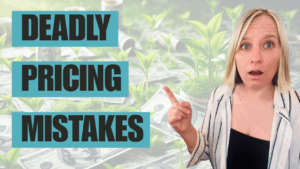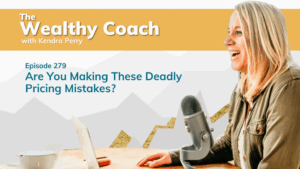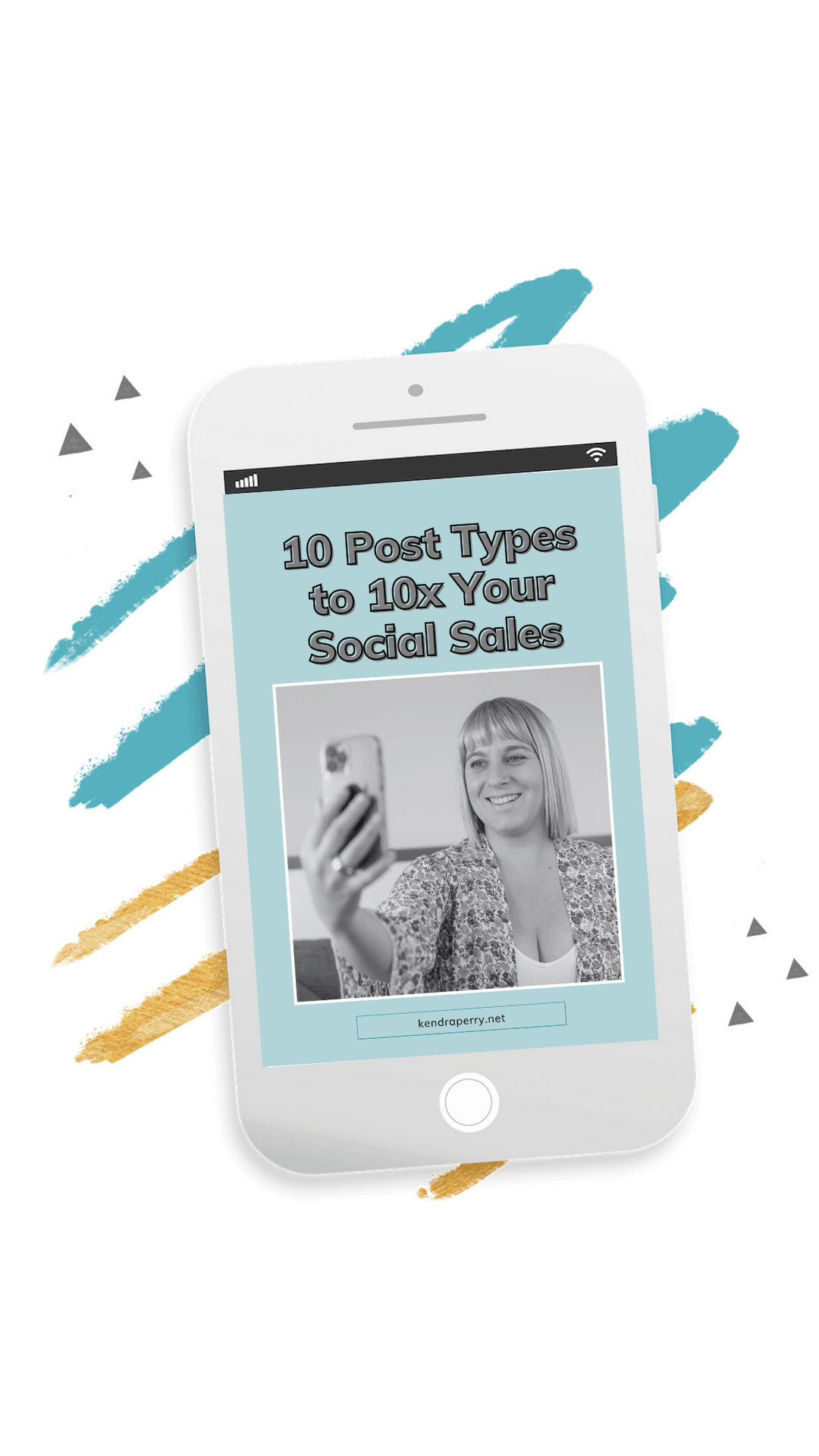In this 200th episode of The Wealthy Coach Podcast, Kendra Perry unravels the secrets of her most successful launch ever! Behind her successful launch lies the tremendous effort and stress she faced. Today, Kendra recounts the mistakes she made, things that didn’t work, and the lessons learned. HCA’s role provided so much value to her clients and her success. Pull the silver curtains of this episode and see the “behind the scenes” of Kendra’s successful launch. Gather the key insights to her success. Maybe it will also unlock the doors to yours.
Give this podcast a 5-star review: https://ratethispodcast.com/wealthy
—
Listen to the podcast here
Secrets Of My Most Successful Launch Ever!
This is episode 200. Can you believe that? If you’re new, you’re probably like, “I can believe that.” I can’t believe I’ve done 200 different episodes of this. I have shared so much amazing content and I’ve had so much fun doing it. I wanted to do something special for the 200th episode. I was going to reach out to some of my colleagues and get different experts to weigh in on a topic but honestly, I’m not that organized.
Instead, I am bringing you behind the scenes and giving you all the insider secrets of my most successful launch ever, my three-day 6-Figure Wellness Offer Challenge. These episodes are very popular. A lot of you like to know how I make my money and run these events. As a business coach, it’s important to be incredibly transparent with how I make my money.

A lot of business coaches won’t tell you numbers, about conversion, and what they’re doing behind the scenes. It can be a little bit misleading in the sense that maybe it seems a lot easier than it is. I always like to be honest and transparent with you about how I make my money, how my launches go, and what my conversion looks like.
Launch Mistakes
Truthfully, I didn’t think I would ever do a free challenge again. I did a five-day free challenge in February of 2022. I believe I called it the Craft Your Signature Offer Challenge. It was very successful in the fact that lots of people signed up, were very engaged, and got a lot out of it. It was incredibly stressful for me. A lot of this was my fault.
The first thing I did wrong with that previous challenge was when I delivered the challenge at the end of the training, I didn’t have any rules or boundaries on how people could post it. I essentially had hundreds of people posting into our Facebook group at all times of day. I was giving them feedback. They were asking follow-up questions. I was giving more feedback.
Even with the help of the HCA coach at the time, I was still in the group giving feedback and doing coaching for about twelve hours a day. If you know me, I’m very much a lifestyle entrepreneur and that is not my style. It was exhausting. I didn’t have any rules on when people could post their challenges. It was like day 5 and people were posting their challenges from day 1. I was still giving them feedback and going back and forth. I wanted people to get so much out of it but ultimately, I had no boundaries. That made me frustrated, bitter, and exhausted.
The other thing that didn’t go quite right with that challenge is five days is a long time. Something I’ve learned as someone who’s done a few events that are 5 days is that 5 days is a lot. It’s a lot of time to be on, show up, be your best self, and be in your best energy. Honestly, it’s the same for the audience. People start to get burnt out and will start to drop off the longer your challenge goes on.
Lessons Learned Towards A Successful Launch
Essentially, I did four days of challenge content and then a “bonus training.” It was the webinar on the final day where I sold HCA. While the challenge was successful, I believe I made about $30,000 or something like that, the conversion was not better than any of my live webinars. A live webinar is one one-hour event and a lot less work. It made me think, “This was successful and fun. People loved it but it didn’t increase my conversion and it was twenty times the work.”
For some reason, I wanted to try again. I felt that I could do it better and I could increase my conversion with it. Since February 2022, the price of HCA has increased. I have a lot of people on my list who’ve come in through ads. I felt that instead of a webinar, people probably needed a longer on-ramp or time to get to know me and what I do before they were ready to buy. I started to think about how I could do this better.
I have to credit my online business manager, Elise Colson, for giving me the idea. She had done some work with another coach who had taught her how to do a three-day challenge where she didn’t also do a webinar. She pitched on the second and third day. To me, that sounded pretty smart. What I noticed with the last challenge is by day five, you get the lowest amount of engagement because people have dropped off, gotten distracted, and moved on to other things. The most engaged days of the challenge are the first and second days, and then things start to decline.
It felt a little silly to run this webinar on the fifth day when it was the least engaged day. This is when I was selling. It made a whole lot of sense to me to be pitching on days 2 and 3 when people were significantly more engaged. I love the idea of not having to do a webinar and the idea of it being three days. Elise is such a great member of my team. She manages all the day-to-day in my business and also gives me ideas. I love having her input.
Essentially, she said that instead of allowing people to post their challenge at any point, why not put out a single thread where they have to post their challenge in the comments and you’re on there for one hour a day giving feedback? You then essentially say, “I will give everyone who has their challenge posted between 3:00 and 4:00 one piece of feedback. If I have time at the end, I will go back and answer follow-up questions.” That’s what I did and that worked so much better. I was only giving feedback from 3:00 to 4:00 PM. People respected that. No one complained. I didn’t have people posting outside of that thread.
I was very explicit with, “Once 4:00 PM comes and goes, I will not be giving any more feedback on the previous days’ challenges.” Everyone respected that. I did have a few people ask me but I stayed true to my boundaries. I said, “Unfortunately, I can’t. I’m only doing it at these times. If I say yes to one person, I’m going to be here all weekend.” Honestly, I was there all weekend. that’s not even exaggerating because, with my previous challenge, I ended up giving feedback over the weekend. This is a free challenge. People aren’t paying for it. I can’t just give away all of myself for free. I was very excited with the format of this.
The other thing I did differently is I taught a whole lot less. With my previous challenge, I gave a lot of the how-to away. I gave a lot away. Something that I’ve learned over the past couple of years is that the more how-to and information you give away in any event, whether it’s a challenge, workshop, or anything that involves selling, the less sales you will make.
The reason for this is because truthfully, in any topic, there’s a whole lot that goes into it but when you give away a whole lot of how-to, people believe that they have everything they need to succeed when they have only a tiny piece of the puzzle. They don’t end up investing in themselves or you because they think they can go out and execute it on their own when truthfully, they don’t have all the information to do so.
In this challenge, I stuck with the higher-level stuff. What I filled the time with was telling more stories, speaking more about my experience, and trying to connect and relate with the audience. It’s amazing. Something I’ve learned is even though it can feel scary to reduce the amount of teaching you were doing on a webinar or something like a challenge because you think people aren’t going to get value out of it, they get more value out of it.
When you focus on shifting paradigms, shifting beliefs, and busting industry myths, that serves your people way more than giving them the how-to. When I first started doing this in webinars and I first learned about this, I was scared. I thought, “People are not going to find this valuable. They’re going to think this is a sales video.” However, I get way more positive feedback when I teach less than when I teach more. Isn’t that funny?
Let’s get into the numbers. I’m going to tell you about the number of people who enrolled and the number I spent on ads. I had 660 people enroll in the challenge. My goal was 800. I was about 140 short of that goal. A big reason for that is we ended up having a high cost per lead on the ads that we ran. They were much higher than what I anticipated. I’m going to talk a little bit more about that when I talk about what went well and what went wrong. I spent $11,500 on ads. This was the most amount of money I’d ever spent on ads for a live event.
I did do a tripwire. I hate the name of that. It’s weird. If you’re not familiar with that, essentially, it is an offer that you offer a person on a Thank You page after they’ve opted in for something for free. it should be a relatively low price. Mine was about $27. I offered a template for a sales page for the program. It should be something natural so something that is related to what you’re offering. I’m offering a challenge that’s showing them how to create and sell their online program. I’m offering a beautifully written sales page template that they can use to sell their program.
It’s very valuable. It’s valued at $1,000 because you could use that template and sell a high-ticket program but I gave it away for $27. I had a 7% conversion, meaning for everyone who landed on that page, 7% bought. That’s pretty typical. When I think of tripwire conversion, I think about 7% to 8% so that was right on point. I generated about $1,500 in sales, which was great because that recouped a little bit of my ad spend.
Of those 660 who enrolled, 300 joined the Facebook group and 25 ended up enrolling in HCA. That was a 4% lead to sale conversion. When I do launches, it’s important to set goals. I always know that I’m probably not going to hit my goal but I do it because it trains my brain to believe what’s possible. Instead of having one goal, I always like to have a good, better, and best goal. I’m like, “Good is this, better is this, and best is this.”
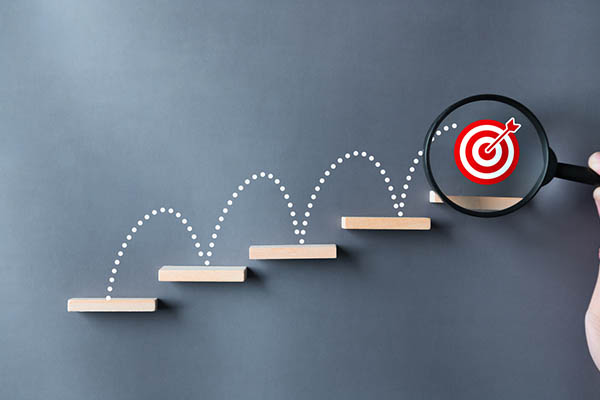
I like that because it’s a range in which the good goal is something that I feel pretty confident about making. If I get that, I still feel like, “Great, I accomplished my goal.” For example, my good goal was converting at 2%. I have never converted lower than 2% in any live launch, even the ones that didn’t go that well. In the launch that I did in July 2023, I had a bunch of tech issues. I messed up Zoom. There were all these glitchy things that happened. I only converted at about 2.5%. That was my lowest lead-to-sale conversion.
Lead-to-sale conversion is the percentage of people who convert based on the number of people who enrolled. What it means is that of the 660 people who enrolled, 4% bought. It’s a very easy calculation. You just divide the number of sales, which in this case is 25, by the number of people in the event, which in this case is 660. You divide that and you’re going to get a decimal point. You times that by 100 to get that percentage, which is 4% in this case. I got 25 sales and then 5 people purchased our downsell.
A downsell is something that I haven’t utilized much in my business but essentially what a downsell is, is it’s something that you offer people after the close cart to all the people who didn’t purchase. It’s something that should be at least 50% lower in price, if not less. It’s something that is still valuable and that they still want but essentially, gets some sales from the people who maybe couldn’t afford the bigger offer. It was my first time experiencing a downsell. We made an extra $5,000. I’ll call that a win.
My total revenue was under $70,000. This was my biggest revenue launch to date. It was a 52% increase from my last best revenue-generating launch, which was in June 2023. I was very happy with this. With the ads, we made about $57,000 in profit. I’m very excited about that. It was a great launch. It wasn’t only great because I made a lot of revenue. It was great because I had the most amount of fun that I’ve ever had in a launch and it was the least amount of stress.
All I did was show up for 1 hour a day over the 3 days and a couple of hours on the final day because I did do a bonus day. I then spent an hour from 3:00 to 4:00 answering people’s questions and giving them feedback on their challenges. It wasn’t that much work and people loved it. I got so much fantastic feedback from it and it wasn’t stressful at all.
Three-Day Challenge
This is the whole strategy of the challenge. I did three days. Over the three days, I taught people how to create and sell their online programs. On day number one, we talked about messaging and niching. On day number two, we talked about developing the program. On day number three, we talked about setting up a sales and marketing system.
I had a bonus day four. On the bonus day four, and this was another recommendation from my amazing online business manager, Elise, I had a student panel. I brought in six HCA students all at different levels in their business. I had one student who was very early on. She just finished the program and launched her program for the first time.
I also had a few students who were in some of the first rounds of HCA back in 2020 and 2021 so that people could get a sense of what the journey looked like. Essentially, what we did was I asked questions to the students. I wanted to showcase what it was like to have a program, what it looked like, what people were charging, and what the success looked like. I then gave the audience the opportunity to ask some questions.
People love this because they want to see, “How many people are in your program? What are you charging? How many people are you working with at a time? What are you doing to sell it?” This was incredibly valuable for the audience. It was also a fantastic testimonial for HCA because the students were amazing. They were like, “Do HCA. It’s amazing. I couldn’t have the success without it. HCA gives you everything you need like the step-by-step process. Kendra’s team is amazing.” Honestly, on my end, I loved it. It made me feel so good.
I’m sure you can resonate with this. As coaches, sometimes we can go through phases in our heads, get stuck in our heads, and wonder if what we are doing matters. I’m like anyone else. I’m human. Sometimes I feel like, “Am I helping people? Does what I do matter?” Having that student panel made me realize that what I do matters. Honestly, it felt good. I love that so we did that.
I did a bonus question and answer session after the student panel where people could ask me questions. I strategically placed some questions about HCA so that I could speak a little bit more about the program. Everything was well attended and people were pumped. I had so many people reaching out to me saying, “Kendra, this was the most fun and super valuable. I learned so much. I’m so grateful for you.” Overall, from a fulfillment standpoint, I felt very fulfilled.
What Didn’t Go Well And What Did
I want to talk about what didn’t go well and what went well. We will start with what didn’t go well and then we’ll finish with the positive. Anytime I do a launch, and I highly encourage you to do the same, I always do a little journal exercise. I think about what didn’t go well, what can I improve on next time, and what went well. I always like to start with the negative like what didn’t go well and brainstorm solutions. I then think about all the things that went well.
What didn’t go well was our cost per lead for ads. With the last challenge I did, I had about a $17 cost per lead. That means for every person who subscribed, I paid $17. If that sounds high, it is but I’m in the B2B space, business-to-business, I pay significantly more for ads than you do in the business-to-consumer space. If you’re a health coach or personal development coach, don’t worry, you will pay significantly less for your ads if you do them right. You can probably pay less than $10.
Me, $17 for a live event is pretty typical. That’s what I got in my last challenge. I always look at history. I have a lot of data in my ads manager dashboard because I’ve been running ads for the past three years. I can go back and get a sense of what we typically pay. I expected to spend somewhere around $15 to $20 per lead. We ended up spending about $26 or $27. The cost per lead was very high.
Part of this was because I started working with an agency and they were not utilizing my audiences properly. Meaning that even though I gave them the information, and I work with health coaches, practitioners, professionals, and life coaches, they were only targeting health coaches. Our audience size was small making the cost per lead quite expensive.
I was able to catch this at the beginning of the launch and I’m like, “No, we need to be targeting medical doctors, therapists, counselors, life coaches, and spiritual coaches.” We were able to get the cost per lead down with that. Truthfully, a lesson that I’ve learned is that I do better running my ads. I have had a lot of ad managers over the past years and they tend to be very expensive. Yes, it is nice to have someone running your ads. It takes something off your plate but I’m pretty good at running my ads.
I have been able to get a significantly lower cost per lead with my ads than this agency has. I’ve been working with them for about three months. All of the cost-per-leads have been significantly higher than what I would get myself so it’s not working out, which is fine. That was a mistake. I don’t think I should have outsourced my ads. At the time, I was feeling a bit overwhelmed. I was moving on from a coach I’d been working with and I’d been getting a lot of ad support through the coaching program I was in. When I moved on, I felt a little bit lost.
What I learned is that I need to trust myself. I would do much better running my ads. I have a colleague who does one-on-one ad sessions. What would serve me better the next time is to hire him to help me set up the ads for the launch and then give me some feedback on optimizing them. I feel very confident doing them myself. That cost per lead was much higher and that was a big reason why we didn’t get the 800. I wanted to get 500 through ads and I got about something like 370 or something like that because of the higher cost per lead.
I wasn’t super happy either with our conversion into the Facebook group. It means that 660 people registered but only 300 joined the Facebook group. What I will tell you is that number, I believe it was about 45%, is very much in the realm of normal. When you run a live event, unfortunately not everyone is going to join the Facebook group even if that’s where the event takes place.
People sign up for things and then things come up where they lose interest or they forget. It’s very normal. A very normal conversion is about 40% to 60%. With my last challenge, I believe we got somewhere around 60%. I was hoping to get around 50% to 60% but it was lower. This is a different time and there’s more going on. While it was still within the realm of normal, I do wish it was a little bit higher.
I’ve been brainstorming different ways that I could incentivize people to join the group. What I was thinking was to put some bonus videos in the group that are already there. When people sign up for the challenge, I can direct them to the Facebook group to get the bonus videos. I’m telling people, “Request access.” That’s not that compelling. Why not open up the group once I start running the ads, start promoting the challenge, and give them 2 or 3 high-value bonus videos in the group so they want to go watch those? Maybe that will increase our conversion into the group. That is something I’m going to try for next time.
The other thing that didn’t go super well was my 8:00 AM start. Typically, when I do anything in the morning, I don’t start until 9:00 AM. For some reason, with this challenge, I was like, “Let’s start at 8:00 AM. We can get it over with and then I can be done for the day.” 8:00 AM is a little bit early. I felt rushed. I am an early riser. I’m typically up around 6:00 or 6:30 but I felt like I had no time to sit and have tea or to go for a walk. I woke up, got dressed, did my hair, put my makeup on, and was right into it. Honestly, I don’t think I’ll do that again. 9:00 AM is a much better time for me. That is a lesson learned.
Overall, most things went well. We had a couple of issues with emails. There was one email that went out where in the name field the person’s name hadn’t been added and said Name. We had a little bit of an issue that we couldn’t quite figure out with the first downsell email that went out. It sent out the wrong link but then fixed itself. There was a weird tech glitch going on there. Honestly, we still don’t know what happened. This is all very normal in a launch but overall, it was great. I don’t have a lot to say that didn’t go well because overall, it went well.
What went extra well was honestly the entire challenge. My stress was low. My fun level was high. I did not feel stressed out throughout the entire launch. Typically, I’d get a little bit of anxiety because I’m not someone who typically does a fast-action bonus. A fast-action bonus is something you would offer that would disappear in the first day or two of the launch to incentivize people to buy early.
Human nature dictates that most people are going to buy right before the deadline and sometimes just in the hours before the cart closes. It’s just human nature. If you want to get early sales, you need to incentivize people to buy early. I used to do this but I’ve moved away from it, mostly out of laziness because truthfully, it does work. Normally, I get most of my sales in the last few days and that can be stressful. You’re not getting sales and the deadline is almost here.
You’re like, “I’m not going to get sales.” Sometimes that sucks. With the way that I did the pitch, I did it at the end of day 2 and the beginning of day 3. When people were the most engaged, I got a sale before the challenge was even over. I then had several more trickle in at the end of the week. I got consistent sales throughout the launch, which isn’t typical for me so that made my anxiety none. I had no anxiety. I wasn’t worried. I felt confident that I was going to make the sales that I wanted to get. The whole mental health aspect of my launch was very good.
The student panel was another thing that went well. I appreciated the students who showed up. They were great ambassadors for the program. I loved how it gave the participants of the challenge an opportunity to ask questions to real people who have successful online programs. That helped my sales. I did business audits. This went well.
Everyone who joined the challenge got a workbook. The way that I did it was through a DM automation. I used a service called ManyChat. ManyChat is partnered with Meta so you can use it for Instagram or Facebook. Essentially, I had it set up so that when people DMed me the word, “Challenge workbook,” they got the workbook automatically through DM.
I did that because I wanted to get connected with everyone by direct message. What I offered people on day three was a free business audit. I said, “If you are not sure if HCA is the right program for you, DM me the word ‘biz audit.’ What I’m going to do is take a look at your social media and any links that you have connected to it. I will quickly know if you are a good fit for HCA. I’ll give you a little bit of feedback.”
I don’t use sales calls for selling so I thought this is a nice way to add in a little bit of personalization and an opportunity to chat with me. Truthfully, sometimes people want to hear from me and know that they’re a good fit for the program. I had about 20 or 30 people take me up on that, which was awesome. I was able to give them little biz audits.
I use Loom, which is a screen share recording. I went over everything and said, “See this. We would help you optimize this.” I sent them a little screen recording, which is very personalized and people loved that. With the exception of a couple, everyone who got a biz audit ended up signing up for HCA. That worked because it gave them a little inside view of what it’s like to work with me. That’s something that I do for my students inside HCA. When they need feedback on something, I will often give them a little screen recording so that they get more feedback and it’s not just typing. That worked well.
Honestly, overall, I loved it. I’m going to do it again in January 2024. I might do a little bit of a different spin on it. When you do something successful, you should rinse and repeat the exact thing. I’m going to pull all the transcripts from the videos and live streams that I did and use that for my script for when I do this in January 2024. I don’t want to change much. It went well. I should be duplicating what works. I’m very excited to redo that in January 2024.

I hope this was helpful and you enjoyed this episode. I like to be transparent with how much money I make, how I’m making money, and what I’m learning. I don’t think business coaches are transparent enough. I feel that oftentimes, they only talk about the positives and the good things. I like to share the dark things with you or the things that didn’t go very well. I will see you in the next episode, same place, same time, where I help you become wealthy AF.

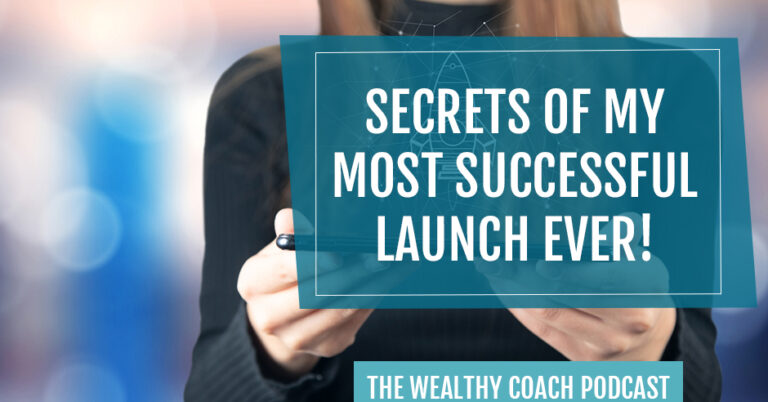
![[BEST OF] A Cautionary Tale About Your Niche](https://kendraperry.net/wp-content/uploads/2025/05/BEST-OF-A-Cautionary-Tale-About-Your-Niche-300x169.png)
